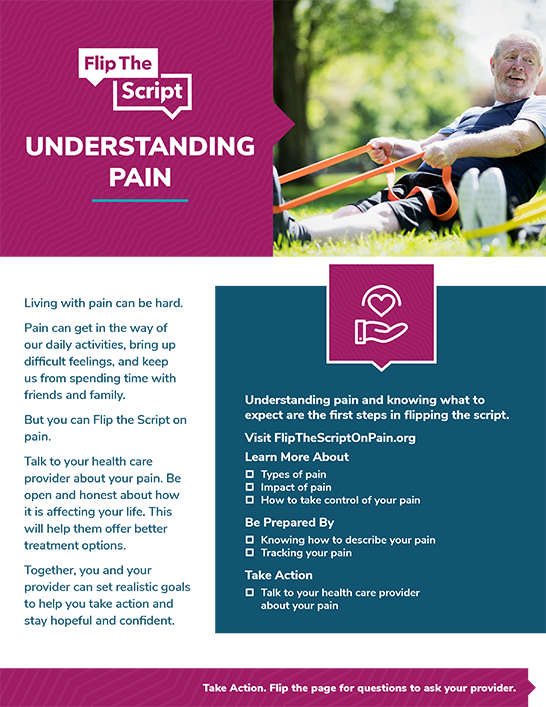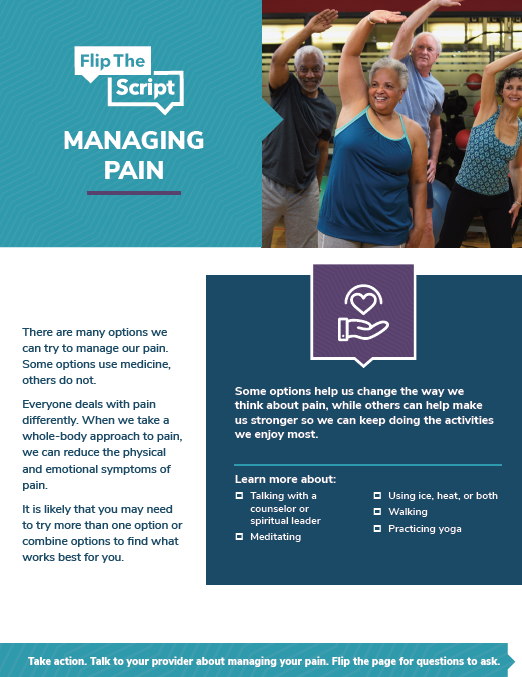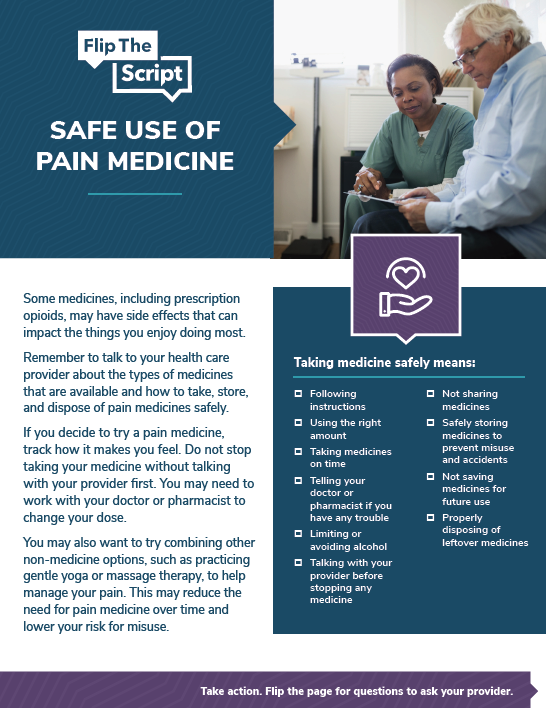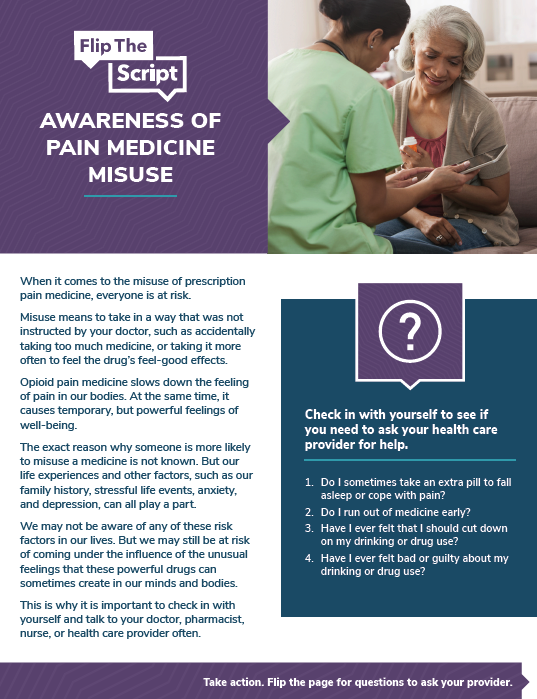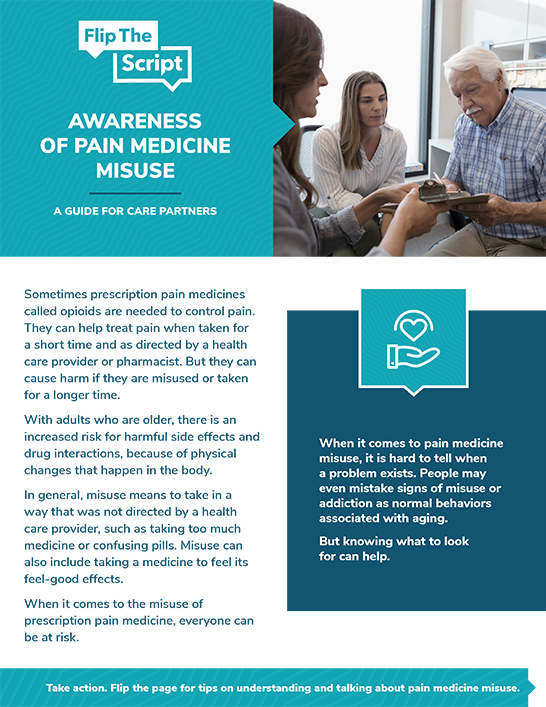Understanding Pain
- Home
- Understanding Pain
Whether you have a recent diagnosis that causes pain, started feeling pain or have felt pain for a while, knowing what results are possible with treatment can help you stay hopeful and confident. Understanding pain is the first step in flipping the script.
Types of Pain
Acute pain lasts for a short time. It begins suddenly, such as after an injury or surgery. It can go away once your body heals. It can also turn into chronic pain.
Chronic pain lasts for 3 months or longer. Many older adults are affected by chronic pain. Arthritis is an example of a condition that causes chronic pain.
Learn more about the basic facts of pain by visiting Health In Aging.


Take Control
When you live with chronic conditions, such as arthritis, it may be more realistic to reduce your pain than to find relief completely. It is important to find ways to keep enjoying the things you like to do.
When you have been dealing with pain for a long time, finding small wins and having positive thoughts can be difficult. These emotions can lead to negative self-talk and unrealistic expectations. To overcome, it is important to practice behaviors that build up self-esteem:
- Practice positive self-talk. Instead of saying “this is too hard” try “I have overcome hard things before.”
- Show compassion for yourself. Support yourself like you would a friend going through a similar situation.
By identifying specific, small goals it will be easier to find solutions that help reduce pain. Your goals could be:
- I want to take my grandkids to the park once a week
- I want to cook dinner for my family
- I want to bathe and dress myself
- I want to feel less stressed
- I want to paint more
Be Prepared
You are the most important member of your health care team. Before talking with a health care provider, take the time to discover more about pain and how it affects your life. Use our information, resources and checklists to learn how to describe and track your pain. This will help your provider offer better treatment options.
Pain also can be different for everyone. Sometimes it is difficult to describe the pain we are feeling. Here are some questions to help you find ways to describe pain. Write answers in a pain diary to track how it’s impacting your life.
- When did it start?
- Does pain come and go?
- What does it feel like: is it sharp, dull or burning?
- When do you feel pain: in the morning, in the evening or maybe after eating?
- What makes it feel better or worse?
There are other resources to help you describe pain and know what to expect at your medical appointment. The American Chronic Pain Association Quality of Life Scale looks at your ability to do the things you like to do, rather than pain alone. It can help you communicate the impact of pain on your daily life, help your health care provider identify the best treatment and measure your progress over time.
Health in Aging’s Pain Management Diagnosis and Tests resource can help you prepare for what your health care provider will discuss when seeking treatment for pain, such as your health history or what medicines you take. It also provides information about pain scales that are used to describe and understand levels of pain.


Take Action
By working with a health care provider, find ways to continue to take part in physical and social activities even with pain. Finding ways to manage pain is often easier if it is addressed early. Some people put off seeing their health care provider because they think pain is a part of aging and nothing can help. But this is not the case. Find relief by learning more about pain, identifying ways that it affects your life and talking to a health care provider to find solutions.
Use the Understanding Pain worksheet to take notes and keep track of questions to ask your health care provider.

